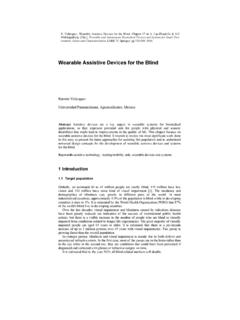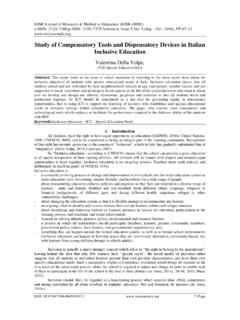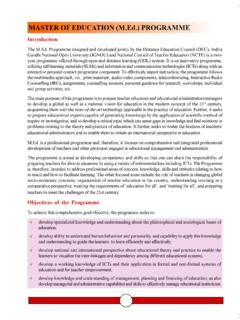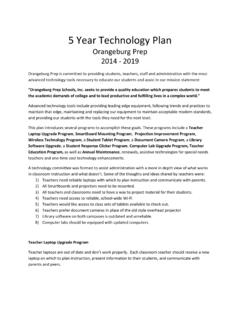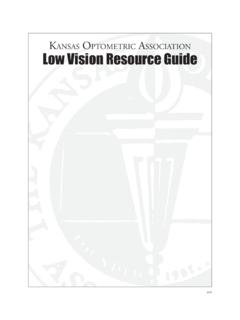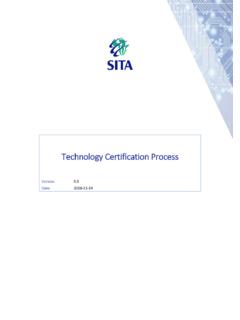Transcription of Emergency Planning for Students with Special Needs
1 Emergency Planning for Students with Special Needs Region 10 Low Incidence Projects 801 Frontage Road NW, Byron, MN 55963 The information contained in this document will assist school administrators, teachers, Special education staff, parents, and Students in Planning for the support that may be required for Students with Special Needs in the event of an Emergency . For the purposes of this document, Students with Special Needs are those who cannot comfortably or safely access and use the standard resources offered in disaster preparedness, relief and recovery, whether their disability is chronic or temporary. *Adapted from the Marin County School District 2 3 Table of Contents Region 10 Schools Emergency Management Plan For Students with Special Needs .. 5 Purpose Of The Plan .. 5 Presidential Mandate.
2 5 Planning Needs and Assumptions .. 6 MITIGATION AND PREVENTION ..8 Medication Management/Important Considerations: .. 9 Important Factors to Assure Access to Communication: .. 10 Time Management: .. 11 Considerations During an Emergency Evacuation: .. 12 Potential Impacts: .. 12 STRATEGIES TO CONSIDER: .. 13 Autism Spectrum Disorders: .. 13 Visual Impairments: .. 13 (Blind-Visually Impaired/Deaf-Blind) .. 13 Hearing Impairments: .. 14 (Deaf and Hard of Hearing/Deaf-Blind) .. 14 Developmental Cognitive Disabilities/Developmental Delay: .. 14 Mobility Impairment: .. 15 Speech or Language Impairments: .. 15 Other Health Disabilities .. 16 Medically Fragile: .. 16 Strategies to consider for all Special education Students : .. 17 Implement Evacuation - Response .. 18 To Evacuate Persons Using Wheelchairs.
3 19 APPENDIX A .. 20 Emergency Medical Information Card .. 21 School Emergency Evacuation Planning Checklist .. 23 School Emergency Evacuation Planning Checklist Continued .. 24 Notification Form .. 25 IEP Team Emergency Evacuation Planning Checklist .. 26 Emergency Evacuation Plan Template .. 27 APPENDIX B .. 28 Lifting and Evacuation Training .. 29 Infinitec Training: .. 29 Cradle Lift or One Person Carry .. 29 Two Person Lift from the Wheelchair .. 29 Emergency Preparedness Supplies .. 30 Go Kits .. 31 4 Online Resources: .. 31 Acronyms .. 34 APPENDIX C: .. 35 5 Region 10 Schools Emergency Management Plan For Students with Special Needs The Region 10 Schools Emergency Management Plan consists of several components including; Checklists, Forms, Identification Cards, sample templates, etc.
4 The Emergency Evacuation Plans for Students with Special Needs is an incident management strategy that serves to augment the your schools Emergency Management Plan. In order to ensure efficient and effective Emergency management, the model Plan must be implemented in its entirety. Purpose Of The Plan The information contained in this document will assist school administrators, teachers, Special education staff, parents, and Students in Planning for the support that may be required for Students with Special Needs in the event of an Emergency . For the purposes of this document, Students with Special Needs are those who cannot comfortably or safely access and use the standard resources offered in disaster preparedness, relief and recovery, whether their disability is chronic or temporary. Presidential Mandate On July 22, 2004, President George W.
5 Bush signed Executive Order 13347, Individuals with Disabilities in Emergency Preparedness, which adds to existing legislation policy to ensure that the safety and security of individuals with disabilities are appropriately supported and requires public entities to include the unique Needs of individuals with disabilities in their Emergency preparedness Planning . 6 Planning Needs and Assumptions For individuals with Special Needs , physical environments become a great deal more hostile and difficult to deal with during and after an Emergency . The ability to get to accessible exits and personal items may be reduced. Communication may be impeded at a time when clear and rapid communication is crucial to safety and survival. To comply with statutes involving Students with Special Needs , individuals responsible for evacuation and Emergency operation plans, notification protocols, shelter identification, Emergency medical care and other Emergency response and recovery programs must: Have sound working knowledge of the accessibility and nondiscrimination requirements applicable under Federal disability rights laws.
6 Know the Special Needs demographics of the Students attending classes on site. Involve Students with different types of disabilities and staff in identifying the communication and transportation Needs , accommodations, support systems, equipment, services, and supplies that they will need during an Emergency . Consider Emergency accommodations for those with temporary disabilities. Identify existing resources within the school and local community that meet the Special Needs of these Students . Develop new community partners and resources, as needed. Inform parents about the efforts to keep their child safe at school. 7 Identify medical Needs and make an appropriate plan. Determine transportation Needs , Special vans and buses for Students . Identify any necessary tools such as personal response plans, evacuation equipment or visual aids; Include local responders and establish a relationship with individual Students with disabilities and their teachers 8 MITIGATION AND PREVENTION Mitigation is the action districts and schools take to identify barriers Students with Special Needs may face during an Emergency and eliminate or reduce their adverse effects.
7 A hazards and vulnerability assessment (see appendix C) of the site will help in preparing the Emergency plan and identifying improvements for safety. Teacher/Student Information- Students Needing Special Assistance: At the beginning of each year, teachers should provide to the main office the name(s) of Students /staff that will require Special assistance in the event of an Emergency (See Appendix A). The type of assistance needed as a result of an injury is also required ( broken leg during the year). Review how an Emergency may impact the daily routine of Students with Special Needs Know who is on your school site: Identify Students and staff on the site with Special Needs and disabilities. The school principal must be aware of all Students with Special Needs using school facilities and services Identify the Students who are severely handicapped and who might need extra support in Emergency crises Make a list of the Students on the school site who are on medication and their medication schedule Maintain a list of all resources regularly relied upon and determine how a disaster might affect the use of them.
8 Examples include (use of mobility aids, communication devices and electrically-dependent equipment) 9 Identify all the stakeholders who should be considered in the plan (family, friends, service providers, personal attendants, physicians and others) Determine what short term accommodations to provide for Students with temporary disabilities ( , broken leg) Assess potential hazards (Hazards Vulnerability Assessment) Review evacuation equipment (Annual Checks should be completed and documented on a district/school form) Have a team discussion about transportation procedures Medication Management/Important Considerations: See Minnesota Department of Health Most Students with Special Needs have very individualized medication schedules. If the schedules are not followed correctly, there can be serious consequences Determine who is going to gather and transport the medications, supplies and equipment needed for the Students Medicines or medical devices may not be available in Emergency shelters; therefore, it is important to make alternative arrangements to meet the Needs of the Students Consider how medicines can be stored in an Emergency .
9 Heat waves and power outages can affect the potency and integrity of some medications. Include an ice chest and cold packs among the school Emergency supplies. If there is a power outage, the ice packs can extend the safe temperature range of medications requiring cold storage until the power is restored Carry contact and medical information for all Students and provide individual medical information on a laminated card with a lanyard 10 Important Factors to Assure Access to Communication: Communication access enables effective interaction with all individuals. It plays a vital role for people who are deaf or blind or who have speech, vision or hearing limitations: Make written materials available in alternative formats ( , Braille, large print, disks, and audio cassettes) and provide hearing- assistive technologies such as amplified phones Include auxiliary aids and services such as sign language interpreters Alarm systems for fire, etc.
10 Will benefit most people if they incorporate both audible and visual elements. The hearing impaired Students may be best alerted by flashing light alarms Give clear, succinct verbal instructions Communicate important information through gestures Pictorial representations, where appropriate, can provide quick and easily understood instruction to many individuals with limited English proficiency, and some individuals with cognitive disabilities Guide Students with low vision or blindness Utilize electronic variable messaging boards, short message systems (SMS), teletypewriters (TTY) or telecommunications display devices (TDD), if you have them Identify staff with foreign language skills, if needed Have aides, buddies, volunteers and evacuation assistants practice basic American Sign Language for Emergency words and instructions such as.
